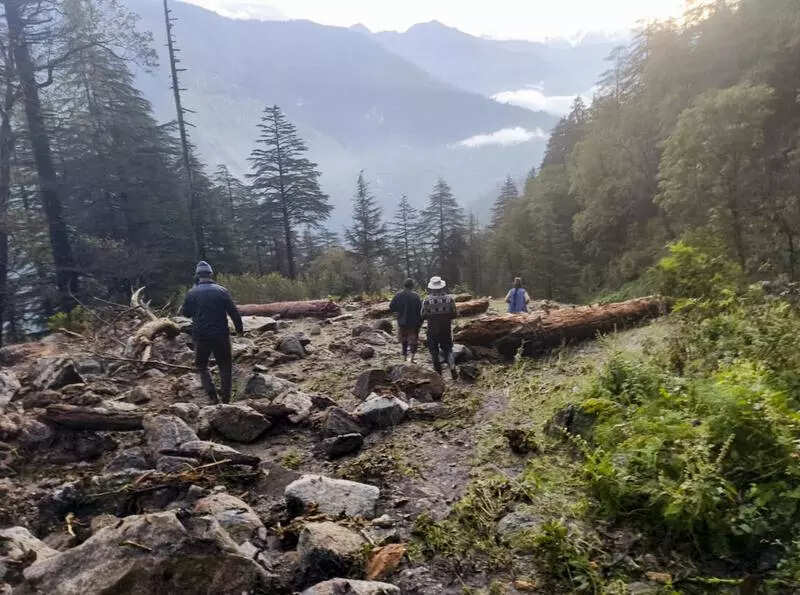Pune: A record 765 very heavy to extremely heavy rainfall events have lashed the Himalayan states this monsoon, triggering landslides and flash floods that battered roads, homes and villages across Himachal Pradesh, Uttarakhand and Jammu & Kashmir.IMD data shows the number of very heavy to extremely heavy rainfall spells in 2025 is the highest in five years, with still a week left for the season till Sept-end. The tally marks a steep rise from 401 such events in 2021, 564 in 2022, 703 in 2023 and 505 in 2024, underlining a troubling trend of more frequent and intense downpours in the fragile hill states.“The number of very heavy to extremely heavy rainfall events in the state is definitely on the higher side,” said K S Hosalikar, former head of climate research and services at IMD, Pune. “From mid-Aug, we have seen a series of low pressure systems forming in the Bay of Bengal. As these systems moved inland and interacted with western disturbances, they gave a lot of rainfall over the hilly terrain of Uttarakhand and Himachal Pradesh.” Experts said the steep Himalayan slopes magnify the impact of such deluges, and the growing number of urban settlements and road projects has increased the risks. Unlike in many years when monsoon performance varies sharply across states, this season has been unusually consistent, Hosalikar said. “For more than two months now, the rainfall departure for India as a whole has hovered around 106 to 108% of normal. Such a uniform and sustained excess is rare,” he saidA senior IMD official said: “Two back-to-back western disturbances, during Aug-end and beginning of Sept, saw the maximum number of heavy, very heavy, and extremely heavy rainfall events in the Himalayan states. In 2025, up to Sept 19, we have already seen about 17 western disturbances, compared to the normal of 13-14 during this period. The western disturbances in the second half of Aug had a very long life cycle and were unusually slow-moving, which could have also played a role.” G P Sharma, president, Skymet Weather Services, said: “The number of very heavy rain events this year is definitely more than average. But what really draws attention is when such events cause chaos and destruction. That is how they get noticed. Particularly in Uttarakhand, the damage is not only due to natural weather systems. Local human interventions have also played a role. In the name of development, we have disturbed slopes, altered floodplains and even changed natural water routes. Earlier, such areas may not have been affected as badly. But now once heavy rains occur, the water takes these altered routes, leading to devastation.” Sharma said the rise in day temperatures on and off when there was a cessation in rainfall activity in the hills could have also played a role. “Air parcels carry moisture depending on temperature. Even a rise of 1.5-2°C increases their moisture-holding capacity by three-four times. Over hilly terrain, air parcels are forced to rise rapidly as they encounter peaks. This rapid upward motion causes cooling and condensation. And once the moisture becomes heavy, it falls as intense rainfall. That is why hills are more vulnerable compared to the plains.”











